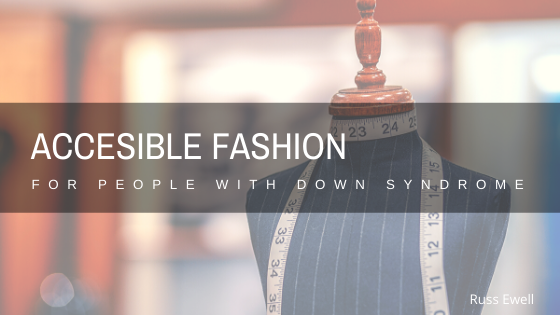Children, teenagers and young adults with Down syndrome will soon have more options when it comes to fashionable clothing. The University of Delaware’s Innovation, Health and Design Lab is working closely with those who have Down syndrome to develop a size guide. The size guide will be the first of its kind. Those with Down syndrome are hopeful that a size guide will help clothing makers develop clothing that fits their unique body shape.
Clothing Concerns
Those with Down syndrome face several problems when it comes to buying clothes. People with the condition don’t have the same body shapes as those without Down syndrome. Those with Down syndrome typically have rounder bodies, shorter limbs, and sensitivities to tags and some fabric textures.
Zippers, buttons, and snaps can be difficult for those with Down syndrome to maneuver. This makes it frustrating to find clothing that looks fashionable and for people with Down syndrome to dress independently.
How the University of Delaware is Helping
The University of Delaware’s Innovation, Health and Design Lab opened in late 2018 by biomechanical engineer Martha Hall. Hall is a fashion designer who became interested in designing clothes for people of all capabilities after witnessing the work of professor Cole Galloway. At the time, Galloway was designing clothing for children with motor deficits. After working with Galloway, Hall dedicated her life’s work to improving the lives of children with disabilities with functional and fashionable clothing.
The lab has 34 students and several professors who are currently working on 22 projects to improve children’s lives. These projects range from wearable devices for premature infants to athletic apparel for teenagers.
The Down Syndrome Size Guide and Jean Project
Team leader Kiersten McCormack is determined to develop a size guide that can be used across the fashion world for those with Down syndrome. She is interviewing more than 1,000 children with the condition. She talks with caregivers to learn each child’s specific needs, such as clothing and fabric preferences. Children have then given clothing the opportunity to be measured and to pick out a pair of jeans with different colors, fabrics, and designers.
A 3D avatar is made of each child and then the jeans are designed to fit each child’s unique body. The size information is being compiled to make a size guide that will be sold to designers. At the end of the project, each child will receive their own unique pair of jeans and the hope that other clothing designs will soon follow.

